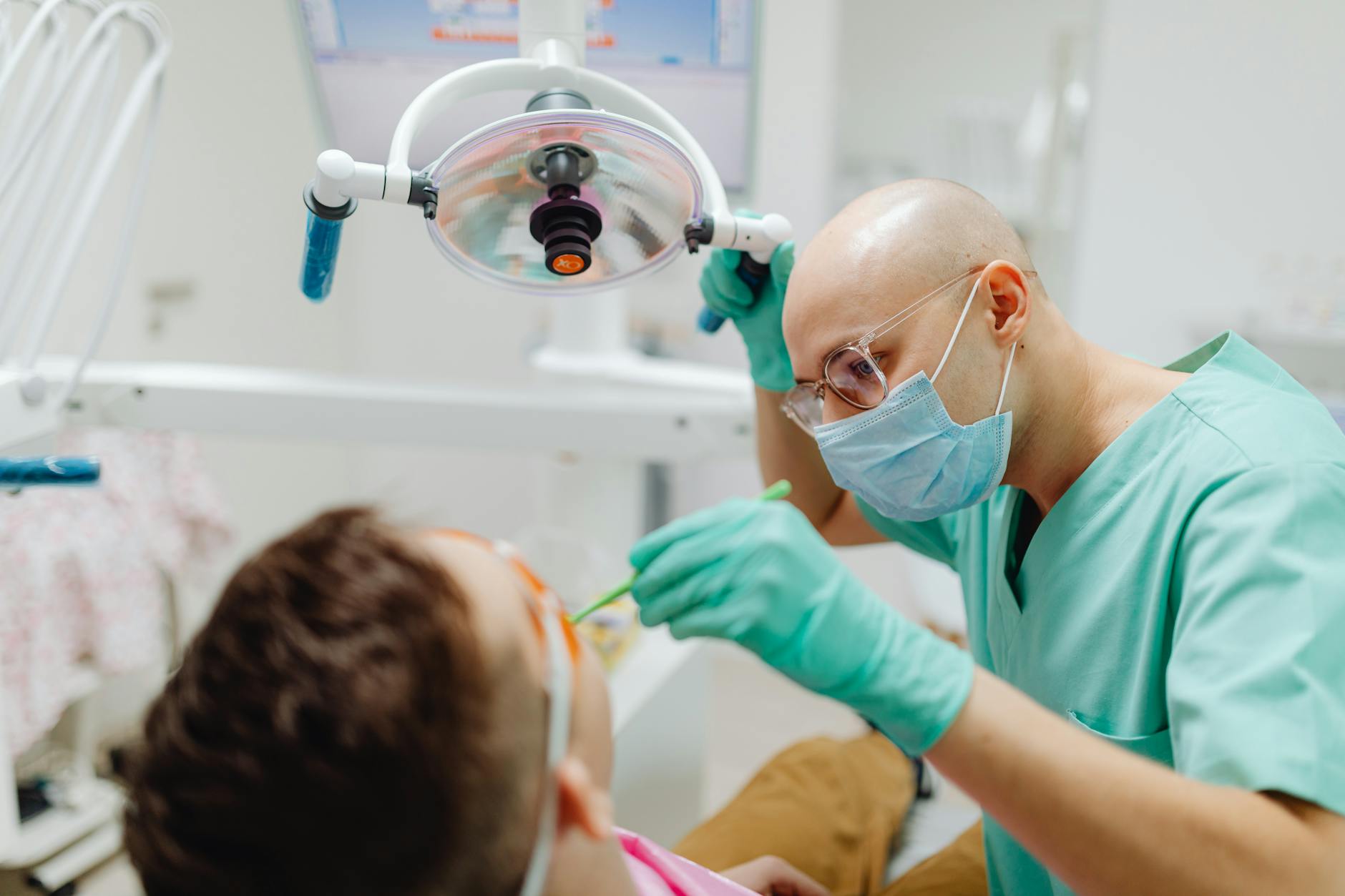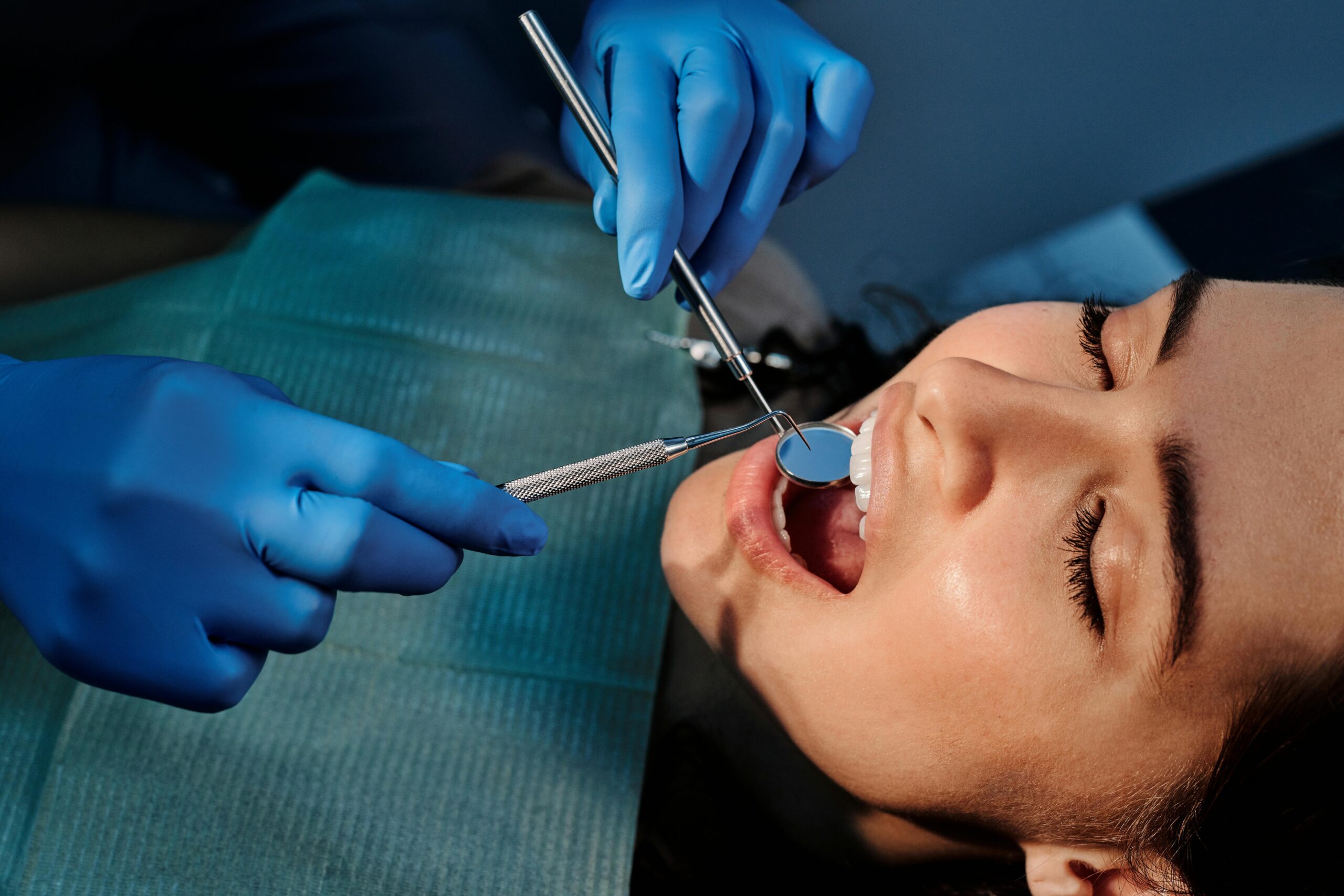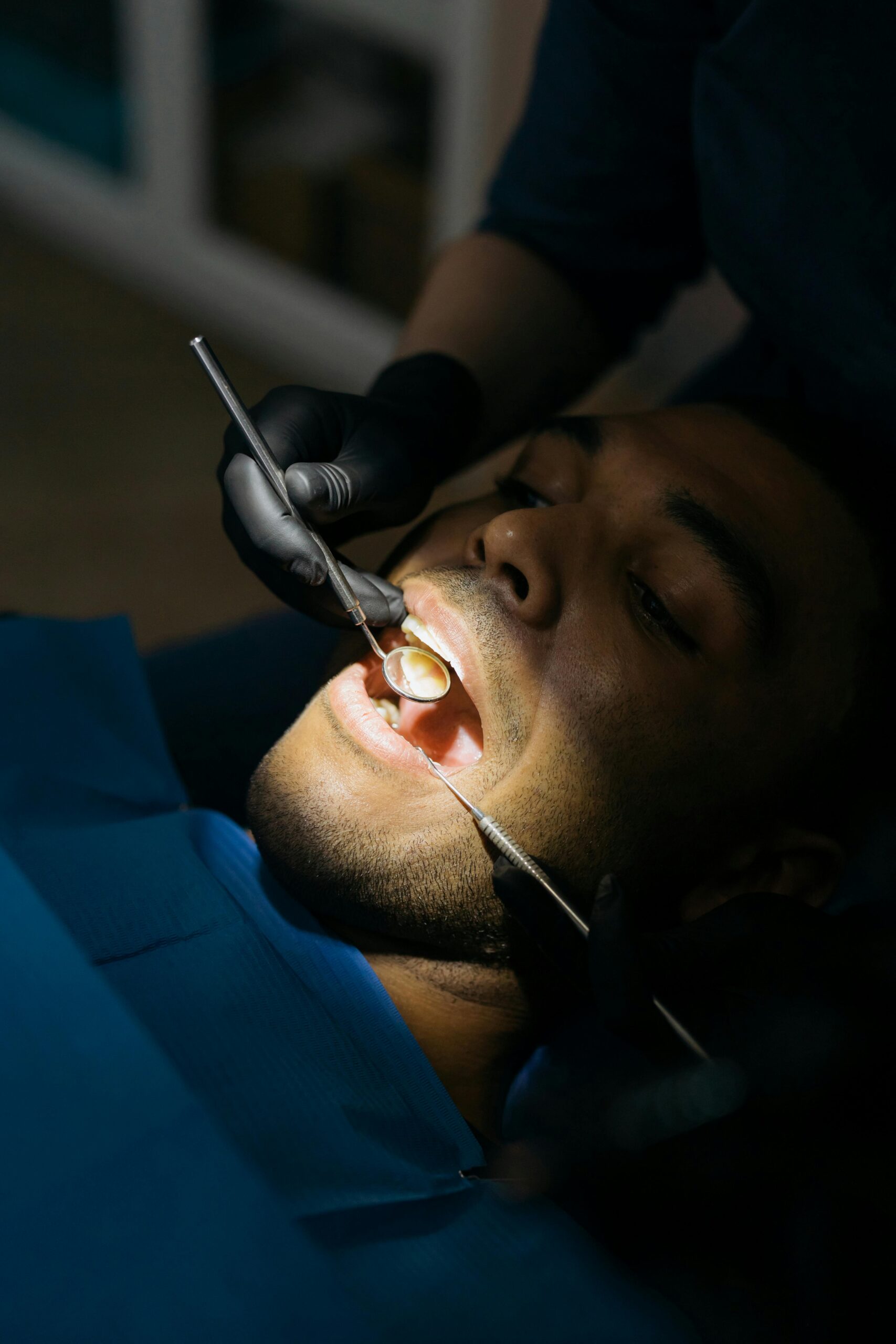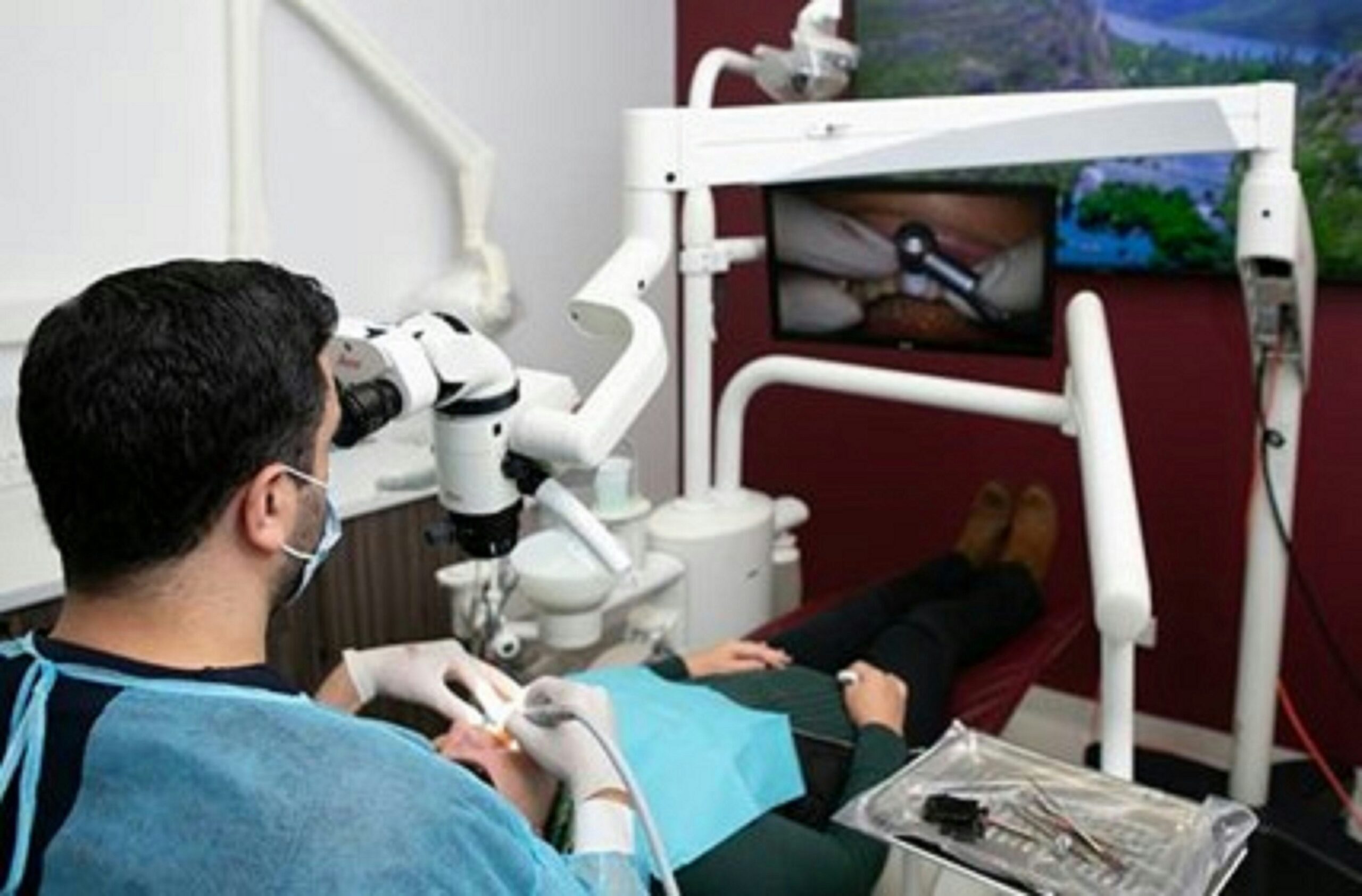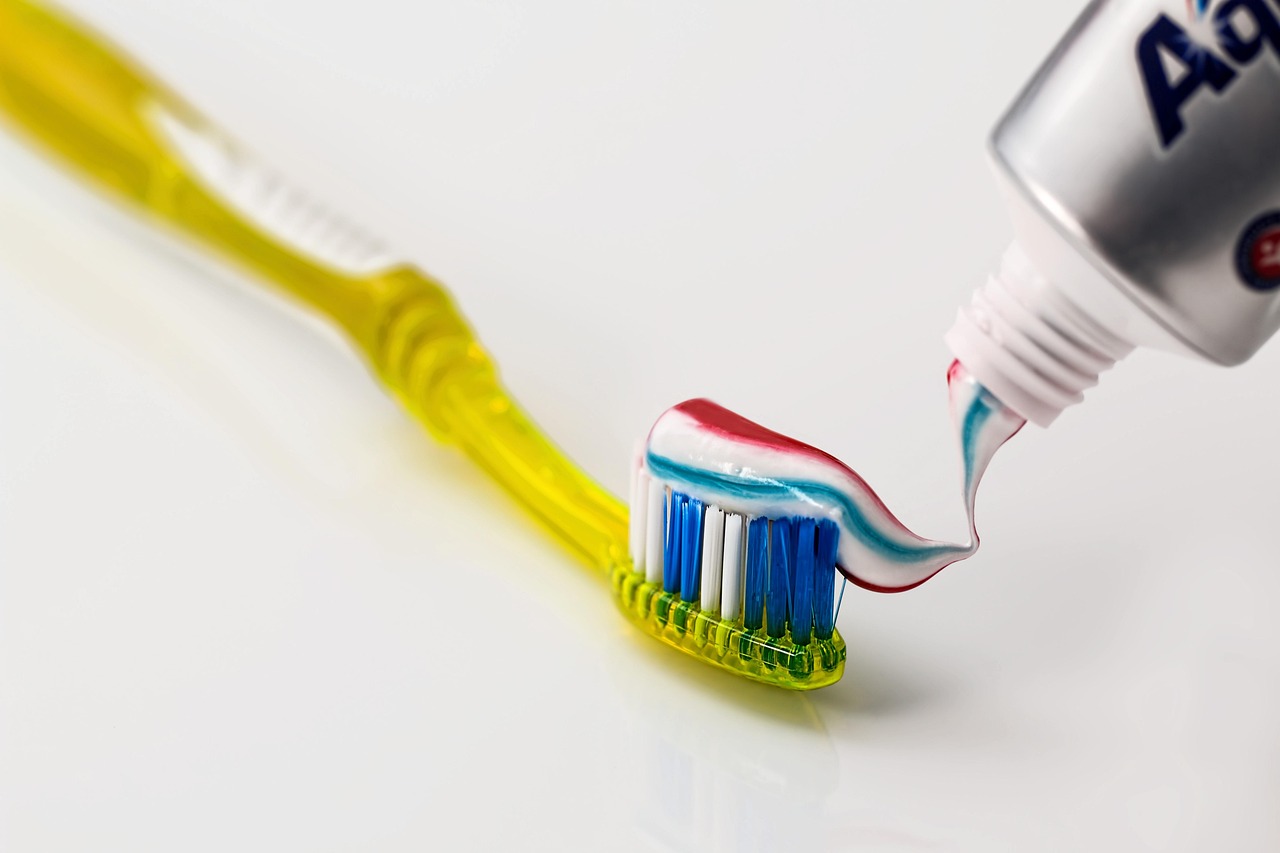Understanding Night Guards
A night guard (also called an occlusal splint) is a removable appliance worn during sleep to cushion and spread the force of clenching or grinding, helping protect teeth and jaw joints. It does not move the lower jaw forward like a mandibular advancement device and does not treat obstructive sleep apnea. In the night guard vs mandibular advancement device discussion, a night guard is chosen primarily to limit tooth wear and ease bruxism-related muscle or joint symptoms.
Most dental night guards are custom-made to fit a single arch—often the upper—so they stay stable and comfortable. Materials vary from softer thermoplastics to hard acrylics; harder designs resist wear and keep the bite surface more stable. The appliance works by providing a smooth, even surface that redistributes bite forces, helps prevent chipping and fractures, and may reduce morning muscle soreness in some people. Your dentist will check the fit and adjust contact points so the jaw closes evenly without locking the joint.
- Purpose: protects enamel and restorations from grinding damage; can lessen muscle overload.
- Types: soft, hard, or hybrid designs; upper or lower arch depending on comfort and bite.
- Fit matters: custom lab-made guards are trimmed to your gums and adjusted to your bite.
- Limits: not a treatment for snoring or sleep apnea; it does not advance the jaw.
- Possible short-term effects: extra saliva, mild soreness, or temporary bite awareness; usually improve with adjustment.
- Care: rinse after use, brush gently with mild soap (not hot water), air-dry, and store in a ventilated case; bring it to dental checkups for evaluation.
Who may benefit? People with worn, chipped, or flattened teeth; jaw or temple soreness on waking; or a partner who hears grinding. If teeth are already damaged, your dentist may recommend repairing them—sometimes with treatments like custom crowns and bridges to restore worn or cracked teeth—and then protecting the results with a well-fitted guard. If you also snore loudly, feel excessively sleepy, or have witnessed breathing pauses, ask about screening for sleep apnea; in those cases, a mandibular advancement device may be discussed separately.
What is a Mandibular Advancement Device?
A mandibular advancement device (MAD) is a custom mouth appliance worn during sleep that gently holds the lower jaw a little forward. By advancing the jaw, it helps keep the tongue and soft tissues from collapsing into the throat, which can reduce snoring and obstructive sleep apnea events. Unlike a night guard, it is designed to move the jaw position rather than just cushion the teeth. MADs are typically used nightly and adjusted by your dentist to balance comfort and airway benefit [1].
How it works: when the lower jaw is advanced, the space behind the tongue widens and the airway walls are less likely to narrow or vibrate. Many devices are “titratable,” meaning the forward position can be changed in small steps over several visits based on symptoms and follow-up sleep testing. In the night guard vs mandibular advancement device discussion, both are worn at night, but the MAD’s purpose is airway support, not protection from grinding.
Who might consider one? People with bothersome snoring, or with a diagnosis of mild to moderate obstructive sleep apnea—especially if they prefer a dental device or cannot tolerate other therapies. A dentist trained in sleep dentistry will take impressions or scans, assess your bite and jaw joints, and fit the device to your teeth. After an acclimation period, small adjustments are made to improve breathing and comfort. Sleep physicians often recommend repeat testing to confirm the device is working as intended [1].
Designs vary. Some devices are two-piece (allowing jaw movement); others are single-piece. Materials range from hard acrylics to reinforced polymers. There are even modified options for people with fewer remaining teeth or partial dentures, which have shown effectiveness when properly selected and fitted [2].
Possible short-term effects include extra saliva, temporary tooth or jaw soreness, or bite awareness. With longer use, small tooth movements or bite changes can occur in some users; regular dental checks help track and manage this. Clean the appliance daily with cool water and a mild cleanser, let it air-dry, and store it ventilated. Bring it to dental visits so fit and wear can be reviewed.
Bruxism and Its Effects on Oral Health
Bruxism is the clenching or grinding of teeth, often during sleep but sometimes while awake. Over time, these forces can wear enamel, chip or crack teeth, and strain the jaw joints and chewing muscles. People may notice morning jaw fatigue, headaches, or tooth sensitivity, and dental work can loosen or break if the habit is strong or frequent.
What happens in the mouth? Repeated loading flattens chewing surfaces, creates shiny “wear facets,” and can form tiny cracks that make teeth sensitive or more prone to fracture. The jaw joints and muscles may become sore or click from overuse. Sleep-related bruxism can also coexist with snoring or other breathing issues; in some patients, jaw posture and airway mechanics appear to interact [3].
Evaluation includes checking tooth wear patterns, testing muscle tenderness, and reviewing sleep, stress, medications, and caffeine. Management focuses on protection and comfort: improving sleep habits and fitting a custom occlusal splint (night guard) to spread forces and shield teeth. Evidence suggests occlusal splints can help with certain temporomandibular disorder symptoms when used as part of care, while also protecting existing restorations [4]. If edges are already chipped or shortened, your dentist may recommend conservative dental bonding to rebuild worn enamel edges so your bite is stable before protecting it with a guard.
Not every case of bruxism feels the same. Some people primarily show tooth wear, while others feel muscle tightness or joint soreness. In the night guard vs mandibular advancement device discussion, a night guard is for protecting teeth and calming bite forces; a mandibular advancement device is aimed at supporting the airway in snoring or obstructive sleep apnea. If you snore loudly or feel very sleepy during the day, let your dentist know so you can be screened and, if appropriate, coordinated with a sleep physician for testing and the right therapy.
How Night Guards Protect Your Teeth
A night guard protects your teeth by sitting between the upper and lower teeth while you sleep. It blocks tooth-on-tooth contact, so enamel does not grind away, and it spreads bite forces more evenly. This helps lower the risk of chips, cracks, and sore jaw muscles from clenching. It is a simple way to shield natural teeth and dental work during nightly bruxism.
Without a guard, a few high spots can take most of the load when you clench or grind. A well-fitted guard gives you a smooth, flat surface, so your teeth touch evenly and slide more gently. That smooth “gliding” surface reduces sudden side pressure on thin edges and fillings. It also acts like a sacrificial layer—if something wears, it is the guard, not your enamel, crowns, or custom porcelain veneers used to rebuild worn front teeth.
Design and fit matter. Most guards are made from durable hard acrylic or layered materials and fit one arch (often the upper) for comfort. Your dentist adjusts the bite on the guard so contact is even when you close and relaxed when you move side to side. These small adjustments help calm overworked muscles, reduce morning tightness, and keep the jaw from “catching” on a spot. Over time, your bite or dental work can change, so the guard should be checked and tuned at regular visits.
In the night guard vs mandibular advancement device discussion, a night guard protects teeth and restorations; it does not move the lower jaw forward or treat snoring or sleep apnea. If you or a partner hear grinding, see flattened or chipped edges, or notice morning jaw fatigue, a guard can be a strong first step to prevent further wear. If you also snore loudly or feel very sleepy during the day, tell your dentist—those signs may call for screening and different therapy. Use the guard nightly as directed, keep it clean with cool water and mild soap, let it air-dry, and bring it to checkups so fit and wear can be reviewed.
Benefits of Mandibular Advancement Devices
Mandibular advancement devices (MADs) help by gently holding your lower jaw forward during sleep, which opens the airway and can reduce snoring and obstructive sleep apnea events. They are non‑invasive, portable, and quiet—no mask, hoses, or electricity. Many are adjustable, so your dentist can fine‑tune the jaw position to balance better breathing with comfort. For bed partners, fewer snoring sounds often mean better sleep for everyone.
In the night guard vs mandibular advancement device discussion, MADs are designed to support breathing, while night guards mainly protect teeth from grinding. MADs can be a good choice for people with bothersome snoring or mild to moderate obstructive sleep apnea, especially if they prefer a dental appliance. Because they are small and easy to transport, they suit travel and shift‑work routines. If you also clench or grind, many MAD designs cover the teeth, which may add a layer of protection even though airway support remains the primary goal.
Comfort features vary. Two‑piece appliances allow some side‑to‑side and opening movement, making it easier to sip water or speak briefly. “Titratable” designs let your dentist advance the jaw in small steps over several visits, guided by symptoms and, when needed, sleep testing. For people with missing teeth, there are carefully designed options that can work alongside options for people with partial dentures; a thorough exam helps determine if your bite and gums can support an appliance securely.
Day‑to‑day use is straightforward. Most patients acclimate over one to two weeks, and many find MADs easier to wear through the night than bulkier equipment. Typical short‑term effects—extra saliva, mild tooth or jaw soreness, or temporary bite awareness—often settle as the fit is refined. Because small bite changes can occur with long‑term use, regular follow‑ups let your dentist check the teeth, joints, and appliance, make adjustments, and discuss tools like a morning “repositioner” if needed. Clean your device daily with cool water and a mild cleanser, let it air‑dry, and bring it to checkups so fit and wear can be reviewed.
Indications for Using a Night Guard
A night guard is recommended when there are signs of clenching or grinding (bruxism), such as flattened or chipped teeth, new cracks, or morning jaw soreness. It is also used to protect existing dental work from heavy nighttime forces. People who wake with tight jaw muscles, tension‑type headaches at the temples, or tenderness near the jaw joints may benefit from a well‑fitted guard. In short, it is chosen to shield teeth and calm overworked muscles during sleep.
Tooth wear is a key clue. Shiny “wear facets,” thinning enamel on the edges, or small fractures around fillings suggest repeated grinding. A guard places a smooth, protective surface between the teeth so forces spread out, which helps prevent further chips and fractures. It is often advised after repairing damaged teeth—such as new crowns, veneers, or bonded edges—to help protect that work from future grinding.
Jaw and muscle symptoms matter, too. If you notice morning muscle fatigue, tenderness when chewing, or jaw joint soreness without clear locking, a custom occlusal splint can be part of care to reduce loading on the joints and muscles while your dentist monitors symptoms [5]. Many people find that a properly adjusted guard lessens morning tightness and helps them avoid flare‑ups tied to nighttime clenching [5].
Health history guides the choice of device. In the night guard vs mandibular advancement device discussion, pick a night guard when the main goal is tooth protection or relief of bite‑related muscle/joint symptoms—not airway support. If you snore loudly, wake choking, or have witnessed breathing pauses, a night guard is not a treatment for those concerns; ask about screening for obstructive sleep apnea and whether a mandibular advancement device is appropriate.
Timing and fit also matter. A guard is best made after active dental pain, broken teeth, or gum infections are addressed, so the fit stays stable. Your dentist will decide upper or lower arch based on comfort, crowding, and bite. Once delivered, small adjustments even out contact so your jaw closes smoothly. Bring the guard to checkups so fit and wear can be reviewed, especially if your bite or dental work changes over time.
When to Choose a MAD
Choose a mandibular advancement device (MAD) when your main concern is snoring or you have a diagnosis of mild to moderate obstructive sleep apnea, especially if you prefer a dental device or cannot tolerate other therapies. A MAD gently holds the lower jaw forward to help keep the airway open during sleep; it is different from a night guard, which mainly protects teeth. In the night guard vs mandibular advancement device discussion, the MAD is selected for airway support rather than tooth protection [6].
Selection starts with a sleep evaluation to confirm the diagnosis and severity, then a dental exam to check your teeth, gums, and jaw joints. Care typically involves a team approach—your sleep physician and dentist coordinate fit, stepwise adjustments, and, when needed, follow‑up sleep testing to verify benefit [7]. This collaboration helps match the device design and jaw position to your airway needs and comfort.
Good candidates can bring the lower jaw forward comfortably, have enough healthy teeth for the appliance to grip, and do not have uncontrolled jaw joint pain. Findings from drug‑induced sleep endoscopy (a short, sedated airway exam) may also help predict who will respond well to a MAD [8]. If nasal blockage, weight changes, or other medical factors are present, those are considered as part of the plan with your medical team [7].
What to expect: most devices are adjustable, so your dentist advances the jaw in small steps while monitoring symptoms and side effects. Short‑term effects like extra saliva or temporary tooth or jaw soreness usually settle as the fit is refined. Because gradual tooth movements or bite changes can occur with long‑term use, regular checks and, if needed, a brief morning “repositioner” routine help keep your bite comfortable [7]. If your primary goal is protecting teeth from grinding damage, a night guard is the better tool; choose a MAD when the goal is quieter breathing and treating obstructive events.
Comparing Effectiveness: Night Guard vs MAD
Both devices work at night, but they solve different problems. A night guard is most effective at protecting teeth from clenching and grinding damage and can ease muscle or jaw joint soreness. A mandibular advancement device (MAD) is most effective at reducing snoring and treating obstructive sleep apnea by gently holding the lower jaw forward. In short, pick the tool that matches your main goal—tooth protection vs airway support.
For bruxism, a well‑fitted night guard spreads bite forces and blocks tooth‑on‑tooth contact. That helps prevent chips, cracks, and further enamel wear, and may lessen morning muscle tension. It does not move the jaw forward or open the airway, so it is not a treatment for snoring or sleep apnea. Some people feel fewer morning headaches and protect their dental work better when they use a guard nightly.
For snoring or obstructive sleep apnea, a MAD advances the lower jaw a small, adjustable amount. This widens the space behind the tongue, which can reduce airway collapse events and the sounds of snoring. It is worn every night and adjusted over time for the best balance of comfort and breathing. A standard night guard will not provide these airway benefits.
What if you grind and also snore? Many MAD designs cover the teeth, so they can offer some protective surface while the main job remains airway support. Your dentist will look at tooth wear, restorations, and jaw joints to choose materials and design that hold up to grinding forces. Regular follow‑ups matter with either device: night guards are checked for even contacts and wear, while MADs are re‑titrated and monitored for bite changes and symptom control.
Side effects differ. With night guards, short‑term extra saliva or mild soreness usually fades as the fit is refined. With MADs, temporary tooth or jaw soreness is common early on, and small bite changes can develop over longer use; a brief morning “repositioner” routine can help. In the night guard vs mandibular advancement device decision, your symptoms guide the choice: protect teeth and calm muscles with a night guard, support breathing and reduce obstructive events with a MAD. If you are unsure which applies, a dental exam and, when needed, sleep testing provide a clear path.
Factors Influencing Device Selection
Choosing between a night guard and a mandibular advancement device (MAD) starts with your main problem and diagnosis. If your goal is to protect teeth from grinding or ease jaw/muscle soreness, a night guard is usually the right tool; if you snore or have obstructive sleep apnea, a MAD targets the airway. Dental and jaw joint health, how your teeth fit together, and what you can comfortably wear all influence the decision in the night guard vs mandibular advancement device discussion.
Symptoms and testing guide the path. Tooth wear, chips, and morning jaw fatigue point toward a night guard. Loud snoring, witnessed pauses in breathing, or daytime sleepiness call for sleep evaluation; when apnea is confirmed—especially in mild to moderate cases—a MAD may be recommended and adjusted over time to support the airway.
Your bite and jaw joints matter. A MAD needs stable teeth and gums to anchor, the ability to bring the lower jaw forward comfortably, and joints that tolerate that position. Overjet/overbite size, missing teeth, and prior dental work affect design; in contrast, a night guard typically fits one arch and does not change jaw position, so it is often suitable even when joints are sensitive (after careful adjustment). If teeth are broken, painful, or gums are inflamed, those conditions are treated first so any appliance will fit and last.
Comfort, tolerance, and lifestyle also play roles. MADs are small and quiet, which many travelers prefer, but they can cause temporary soreness and, over longer use, small bite changes; regular follow‑ups and morning “repositioning” exercises help manage this. Night guards may increase saliva briefly and need periodic bite refinements, but they generally do not shift tooth positions because they do not push the jaw forward. If you grind and snore, some MADs can be chosen and built to withstand grinding, prioritizing airway support while still providing a protective surface.
Finally, medical context counts. Nasal blockage, weight changes, reflux, and certain medications can influence snoring or apnea and should be considered with your medical team. Coordinate care: dentists focus on fit, comfort, and tooth/joint protection; sleep physicians confirm diagnosis and track airway benefit. With that team approach, the device can be matched to your goals and health.
Comfort and Fit Considerations
Comfort comes from a precise fit and how the device changes (or does not change) your jaw position. A night guard usually feels slimmer because it covers one arch and simply cushions the teeth. A mandibular advancement device (MAD) fits both arches and holds the lower jaw slightly forward, which some people need a short time to get used to. In both cases, custom impressions or scans and careful adjustments make the biggest difference in comfort.
Night guards are trimmed to your gumlines and shaped so your cheeks and tongue are not rubbed. The bite surface is smoothed and balanced so your teeth meet evenly without “high spots.” Early on, you may notice extra saliva or mild pressure on a few teeth; your dentist can fine‑tune contacts so the jaw closes and slides comfortably. Because the jaw is not moved forward, most people adapt within days, and the guard’s bulk is limited to one arch.
MADs feel different because they add material to both arches and gently advance the jaw. Two‑piece designs allow limited side‑to‑side movement, which can feel more natural for some sleepers. Expect a brief break‑in period with possible tooth or jaw soreness as the device is “titrated” forward in small steps. A morning “repositioner” or simple bite‑settling routine can help your bite feel normal after removal; your dentist will show you how.
Fit details matter. For either device, smooth edges, even contact points, and the right thickness help prevent sore spots. People with a strong gag reflex often do better with a lower‑arch night guard or a MAD that keeps bulk away from the palate. If you clench or grind heavily, tell your dentist; the material and design can be chosen to resist wear while staying comfortable. If nasal stuffiness or jaw joint tenderness is present, that is discussed up front so settings (jaw position and vertical opening) are gentle at the start.
In the night guard vs mandibular advancement device decision, match comfort to goals: the night guard aims for a light, stable feel and even bite contacts, while the MAD adds some bulk and forward jaw posture in trade for airway support. With either option, small, scheduled adjustments are normal and are the key to long‑term comfort and success.
Potential Side Effects of Each Device
Both devices are generally safe, but each can bring short‑term adjustments and, for some users, longer‑term changes. Night guards most often cause extra saliva, mild tooth pressure, or temporary bite awareness that settles with fit refinements. Mandibular advancement devices (MADs) share those early effects and can also create jaw stiffness during “titration,” when the lower jaw is advanced in small steps. Over time, some MAD users may notice small bite changes, which is why regular follow‑ups matter.
Night guard side effects are usually temporary and comfort‑related. Early on, you may notice drooling, a brief gag reflex, or pressure on a few teeth. The bite can feel “different” in the morning but typically normalizes within minutes as muscles relax. If the guard is uneven or too soft for your bite, it can encourage clenching or make jaw joints feel irritated; careful adjustments and, when appropriate, switching to a more stable material help. Remember, a night guard protects teeth but does not treat snoring or obstructive sleep apnea.
Mandibular advancement device side effects reflect its job of holding the lower jaw forward. Common early effects include extra saliva or dry mouth, tooth or gum tenderness, and morning jaw stiffness. These often improve as the device is fine‑tuned. Because the jaw is kept forward nightly, gradual tooth movements can occur over long‑term use—such as small changes in overbite/overjet or how back teeth meet. A short morning “repositioner” routine and periodic checks help minimize and track these changes. People with sensitive jaw joints may feel temporary soreness during adjustments; settings can be paced more gently to improve tolerance.
You can lower risks with good habits and follow‑up. Keep the appliance clean and dry between uses, and bring it to dental visits so fit, wear, and your bite can be reviewed. Report sore spots, clicking joints, or bite changes early—small refinements usually solve them. In the night guard vs mandibular advancement device discussion, choose the tool that matches your main goal, and plan on brief acclimation plus scheduled check‑ins so comfort and oral health stay on track.
Consultation and Customization Options
Your visit starts with a simple goal: match the device to your needs and make it fit comfortably. We review your symptoms, examine your teeth and jaw joints, and screen for snoring or possible sleep apnea to guide the night guard vs mandibular advancement device choice. Both options are custom-made from impressions or digital scans, then adjusted over visits so they work smoothly while you sleep.
First, we take a focused history—tooth wear, morning jaw fatigue, headaches, snoring, or witnessed breathing pauses—plus medications and prior dental work. The exam looks at enamel wear, fillings or crowns, gum health, and how your bite comes together. Records usually include digital scans or impressions and a gentle bite registration. If snoring or apnea is likely, we coordinate evaluation with your medical team before choosing or finalizing a mandibular advancement device (MAD).
For a night guard, customization centers on comfort and even contacts. We choose upper or lower arch based on crowding, gag reflex, and bite. Material and thickness are selected to resist your grinding forces while staying slim enough to wear all night. At delivery, we smooth edges and balance the bite so your teeth touch evenly and glide without “high spots.” A short follow-up visit fine‑tunes contacts and checks for any sore spots.
For a MAD, customization focuses on airway support with tolerable jaw posture. We measure how far your lower jaw can move forward comfortably and set a gentle starting position. Most MADs are “titratable,” so we advance the jaw in small steps over several visits as symptoms improve. Vertical opening is set to keep the device stable but not bulky. We also show a brief morning “repositioner” routine to help your bite feel normal after removal, and we coordinate with your sleep physician about testing to confirm benefit.
Typical timelines run one to three weeks from records to delivery, with scheduled checks afterward. If you have a strong gag reflex, digital scans and thoughtful design choices help. Bring your device to regular dental visits so fit, wear, and your bite can be reviewed. For planning your visit, see our current hours.
Frequently Asked Questions
Here are quick answers to common questions people have about Night Guard or MAD? Choosing the Right Device in Glendale, AZ.
- Can wearing a night guard prevent tooth wear?
Wearing a night guard can effectively prevent tooth wear due to bruxism by placing a protective layer between your teeth. This cushioning helps spread out bite forces and prevents direct tooth-on-tooth contact, reducing the risk of enamel grinding, chipping, or fractures. However, it is important to have a well-fitted guard made from durable materials since the fit ensures comfort and effectiveness.
- How do mandibular advancement devices help with sleep apnea?
Mandibular advancement devices (MADs) help manage sleep apnea by positioning the lower jaw slightly forward during sleep. This forward positioning opens the airway and helps reduce the frequency of snoring and apnea events. MADs are often recommended for individuals with mild to moderate obstructive sleep apnea who prefer a dental appliance over other treatments. A proper fit and periodic adjustments are essential for maximizing the device’s effectiveness.
- What are the typical side effects of using a night guard?
Common side effects of using a night guard include increased saliva production, mild soreness, or temporary awareness of the appliance in your mouth. These symptoms usually diminish as your mouth adapts to the device. A well-adjusted night guard helps prevent these issues and ensures a comfortable fit. Remember to rinse it after use and keep it clean for the best experience.
- Is a mandibular advancement device suitable for everyone?
While mandibular advancement devices (MADs) are effective for many, they are not suitable for everyone. Patients should have enough healthy teeth to support the device, be able to comfortably bring their jaw forward, and not have significant jaw joint pain. An evaluation by a dentist and a sleep specialist is needed to determine if a MAD is appropriate for you, especially if you have conditions like uncontrolled jaw pain or missing teeth that could affect fit.
- Can a night guard treat snoring?
A night guard is not designed to treat snoring. Its primary function is to protect teeth from damage due to grinding or clenching. If snoring is a concern, a mandibular advancement device is generally a better choice, as it specifically targets the airway to reduce snoring and sleep apnea events.
References
- [1] The effects of mandibular advancement devices on pediatric obstructive sleep apnea: An umbrella review. (2025) — PubMed:41005116 / DOI: 10.1016/j.smrv.2025.102166
- [2] Modified Mandibular Advancement Device Is Effective in Patients With Insufficient Teeth: A Systematic Review. (2025) — PubMed:40999836 / DOI: 10.1111/joor.70061
- [3] The Impact of Functional Jaw Orthopedics on Sleep-Related Breathing and Sleep-Related Bruxism: Case Series Study. (2025) — PubMed:40964220 / DOI: 10.1055/s-0045-1808071
- [4] Assessment of Using Occlusal Splints Without Other Adjunctive Treatment Modules in the Management of Temporomandibular Disorders: A Systematic Review of Literature. (2025) — PubMed:40951096 / DOI: 10.7759/cureus.89955
- [5] Recommendations on the Use of Oral Orthotic Occlusal Appliance Therapy for Temporomandibular Joint Disorders: Current Evidence and Clinical Practice. (2023) — PubMed:37534353 / DOI: 10.1007/s12663-023-01939-y
- [6] Diagnostic and Therapeutic Indications of Different Types of Mandibular Advancement Design for Patients with Obstructive Sleep Apnea Syndrome: Indications from Literature Review and Case Descriptions. (2024) — PubMed:39272700 / DOI: 10.3390/diagnostics14171915
- [7] Beyond Usual Care: A Multidisciplinary Approach Towards the Treatment of Obstructive Sleep Apnoea. (2021) — PubMed:35071340 / DOI: 10.3389/fcvm.2021.747495
- [8] The predictive value of drug-induced sleep endoscopy for treatment success with a mandibular advancement device or positional therapy for patients with obstructive sleep apnea. (2022) — PubMed:34596877 / DOI: 10.1007/s11325-021-02501-1

